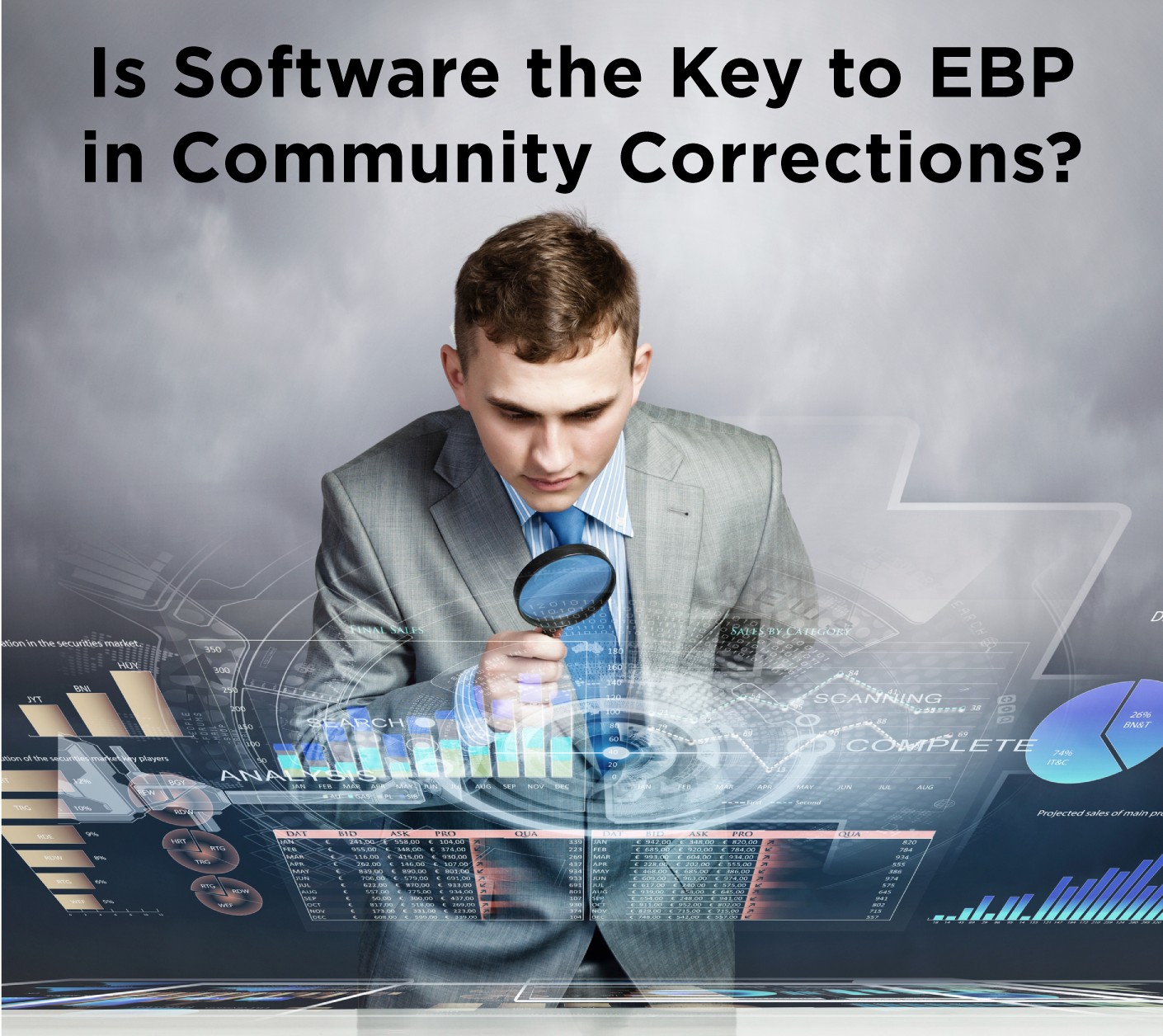CorrectTech is supporting the work American Probation & Parole Association (APPA) is doing to communicate what is new and needed in technology for community corrections agencies in a time of change and increased remote work. We would like to share this article recently published on the APPA website and encourage you to engage in the APPA community on this topic and more.
Read MoreRecent Posts
Tele-Supervision and Tele-Work – Where do we go from here?
Posted by Eric Tumperi on 6/11/20 6:00 AM
Topics: Community Corrections Professional, Technology, Software, Outcomes, Remote work, probation staff, tele-supervision, parole, tele-work
One Size Doesn't Fit All
Posted by Eric Tumperi on 12/1/16 12:36 PM
Get Them out of Prison Beds and into Reetry
When our CorrectTech team meets with community corrections agencies across the country, we see an increasing number of criminal justice stakeholders looking at the efficiency and effectiveness of community corrections.
With the movement of all-but-the-highest-risk offenders away from prison beds, community corrections programs are receiving more clients and focus and, therefore, higher expectations.
There is an international effort to integrate a wide range of programming, interventions, education, and treatment. Gone are the days of “one size fits all” interventions. Case plans must be specific and individualized, all while demonstrating fidelity to evidence based practices (EBP) and state and federal mandates.
More than Cookie Cutter Treatment
While there are many exceptional automation systems centered on courts and jail processes, traditional case management systems (CMS) were not conceptualized with this type of client-centered treatment or EBP implementation and tracking.
Historically, community corrections has been under-utilized and underfunded.
Topics: Community Corrections, Change, Software
Is Software the Key to EBP? – Part II
Posted by Eric Tumperi on 1/7/16 1:00 PM
Data Matters in Community Corrections!
The second decade of this young millennium is proving to be a major turning point for community corrections agencies and practitioners.
Software is changing the way we practice community corrections and we are making progress daily in our efforts to make our data systems more functional, practically and clinically. (See Is Software the Key to EBP –Part I to see how.)
Practically, it is now possible to have a fully paperless and EBP-influenced information system that has the ability to integrate facility security functions with overall case management, treatment, programming, accountability, supervision, and outcome measures.
Clinically, treatment providers and researchers are working together in unique ways to actually implement EBP rather than just talk about it.
Technologically, advances in software performance and flexibility have resulted in the ability to quickly integrate new practical and clinical innovations into community corrections information systems.
The EBP and “what works” movements were born out of data at a time when few community corrections programs had sophisticated information systems. The research data gathering was painstaking and resulted in limited visibility. For EBP to fulfill its promise to impact the lives of both the practitioner and the client, it is time for integrated and intelligent systems to provide the next generation of “EBP Data” that comes to us daily, weekly and monthly from our own IT systems.
Read More
Topics: Evidence Based Practices, Software
Is Software the Key to EBP?
Posted by Eric Tumperi on 11/5/15 1:00 PM
The Foundational Roles of Technology in Agency EBP Work
For evidence based practices to come alive, we must measure everything… and not using our fingers and toes!
It All Started with Looking For A Better Way…
Ten years ago, there was little reason to focus on the software features needed to design an EBP software system. Early in the EBP movement, agencies’ pursuit of EBP was tied to “validated risk assessments” and new case management disciplines as characterized in Motivational Interviewing.[i] In other words, there was little impact on legacy case management systems. In fact, new automation was centered on the emerging risk assessment tools.
Today, with rising expectations from funding agencies, courts, and our community stakeholders to show progress in EBP, measure outcomes, and determine what works with our own client populations, the rules have changed. There is fresh impetus and opportunity to reconsider what it means to have a modern-day case management system for the residential and non-residential community corrections field. After all, legislators and community stakeholders have been convinced of the merits of the science and strategy behind investing in offender rehabilitation instead of incarceration. The challenge for the coming decade is to show real results and make meaningful efforts to learn about outcomes, apply new knowledge, and create a system of people, processes and data that brings the promise of EBP to life.
Read MoreTopics: Community Corrections, Evidence Based Practices, Policy, Motivational Interviewing, Change
The Future Belongs to Progress...Are You Coming?
Posted by Eric Tumperi on 6/3/15 11:05 AM
Subscribe to our blog and get all of our blog posts delivered right to your inbox.
A Shift in Thinking in Community Corrections
I turned 54 when I started writing this post. So... I’m “old” (at least that is what my four kids tell me). Another birthday simply means I have personally experienced many shifts in business and information technology in the past half century including but not limited to the following:
-
Mainframes taking whole floors of buildings to networked devices that practically disappear into our surroundings
-
Transaction systems in isolated silos to enterprise database systems that allow rapid integration and collaboration
-
Large scale custom software projects to highly configurable "off the shelf" software products
-
Simple single function web sites to comprehensive Enterprise web portals
-
Cloud technologies such as Software as a Service (SaaS), Platform as a Service (PaaS), and Infrastructure as a Service (IaaS)
So what does my technology and software experience have to do with today’s community corrections business?
Read MoreTopics: Community Corrections, Evidence Based Practices, Technology
Subscribe To Our Blog
Recent Posts
Posts by Topic
- Community Corrections (61)
- Evidence Based Practices (44)
- Community Corrections Professional (23)
- Software (15)
- Practices (12)
- Change (11)
- Technology (10)
- Risk Principle (8)
- reentry (8)
- probation staff (7)
- EBP (6)
- Outcomes (6)
- client development (6)
- client needs and values (6)
- coaching community corrections clients (6)
- Assessment (5)
- Community (5)
- Developing a practice model (5)
- Justice-Involved Clients (5)
- Remote work (5)
- The Coaching Habit (5)
- parole (5)
- risk (5)
- tele-supervision (5)
- tele-work (5)
- Community Engagement (4)
- Evan C. Crist (4)
- Community Corrections Client Services (3)
- Criminal Justice Reform (3)
- Implementation (3)
- Listening Skills (3)
- Motivational Interviewing (3)
- Policy (3)
- Positive Reinforcement (3)
- Practice Models (3)
- high risk client (3)
- reaching clients emotions (3)
- responsivity (3)
- Addiction (2)
- BOP (2)
- Conferences (2)
- ICCA (2)
- Management (2)
- Michael Bungay Stanier (2)
- Relapse Prevention (2)
- halfway house (2)
- jic (2)
- principles (2)
- procedures (2)
- program results (2)
- APPA (1)
- Appreciative Thinking (1)
- Brian Lovins (1)
- COVID-10 (1)
- Community Connection (1)
- Coronavirus (1)
- Crisis (1)
- Customer Service (1)
- Data Management (1)
- Fidelity (1)
- ICCA Seattle (1)
- Juvenile Corrections (1)
- Leadership (1)
- Monitor History (1)
- Opioid Addiction (1)
- Opioid Crisis (1)
- Orange is the New Black (1)
- Program Data (1)
- Reforms (1)
- Relapse (1)
- Second Chances (1)
- Switch by the Heath Brothers (1)
- Treatment (1)
- drug testing (1)
- going paperless (1)
- govcio outlook (1)
- impact sessions (1)
- innovation (1)
- intrinsic motivation (1)
- justice reinvestment (1)
- marijuana testing (1)
- money savings (1)
- opiod testing (1)
- paperless office (1)
- purpose (1)
- remote working (1)
- resources (1)
- sanction (1)
- staff productivity (1)
- technology solutions provider (1)
- the awe question (1)
- what works (1)
- what's on your heart (1)
- work from home (1)

.jpg)





